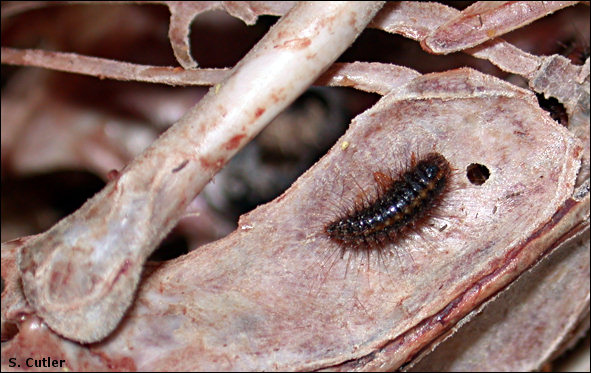

Mankind utilizes the services of all sorts of animals. You know many of them, from chickens to cattle to horses to lab mice. Then there are some not so familiar, such as falcons used for hunting. There are others you know of, but probably aren't apt to have come to mind, like bees. But there's probably not one person in a thousand who would tie together natural history museums and dermestid beetles.
If you're in the habit of turning over dried up carcasses in the
wild, you're probably familiar with these small insects. The name comes from words
meaning eaters of flesh, which may give you some idea as to why you find them in
carcasses and museums. Many natural history museums collect animals as part of their
scientific investigations. The study of skeletons is a worthy endeavor in its own
right, but mammalogists, especially, need skulls for identification and evolutionary
studies. Thus many such a museum houses a colony of dermestid beetles, whose larvae
delight in delicately nibbling flesh from bone. To each their own, I always say.

Listen to the Audio (mp3 format) as recorded by KTEP, Public Radio for the Southwest.
Contributor: Arthur H. Harris, Laboratory for Environmental Biology, Centennial Museum, University of Texas at El Paso.
Desert Diary is a joint production of the Centennial Museum and KTEP National Public Radio at the University of Texas at El Paso.


Adult and larval dermestid beetles. The larva is the worker; the adult's role is to produce more larvae.